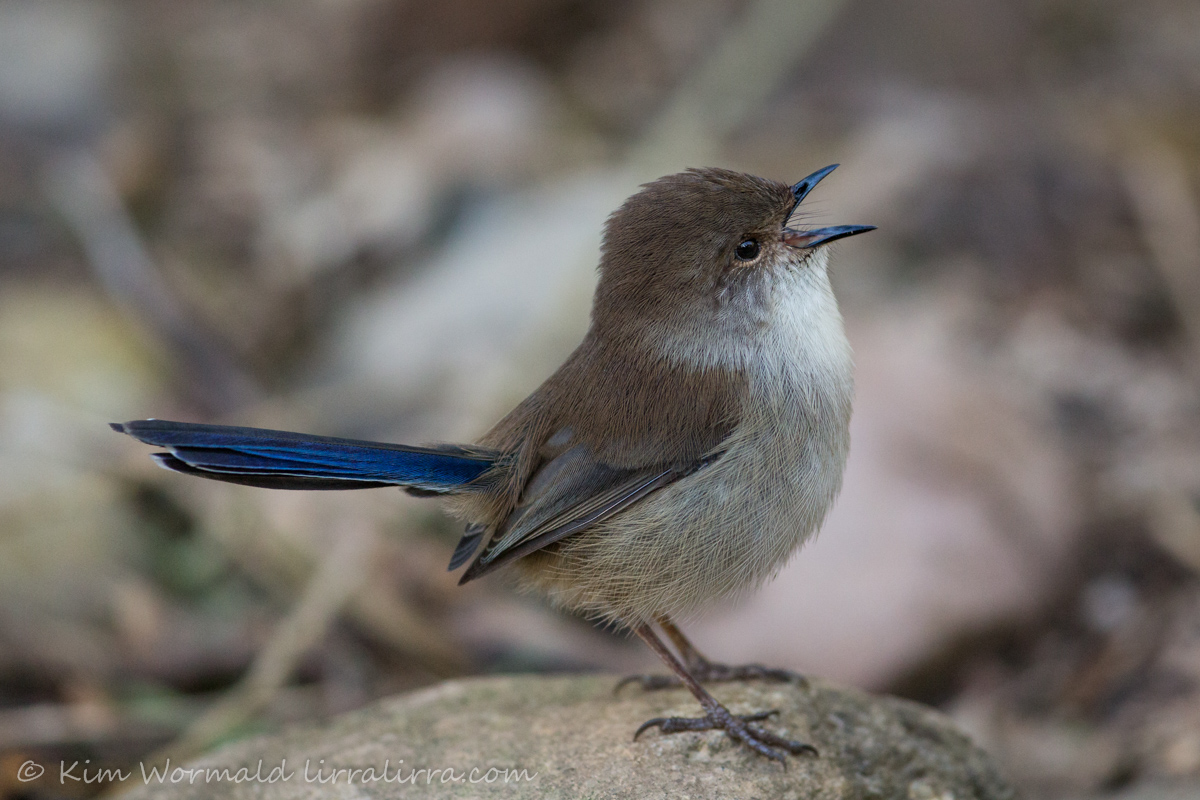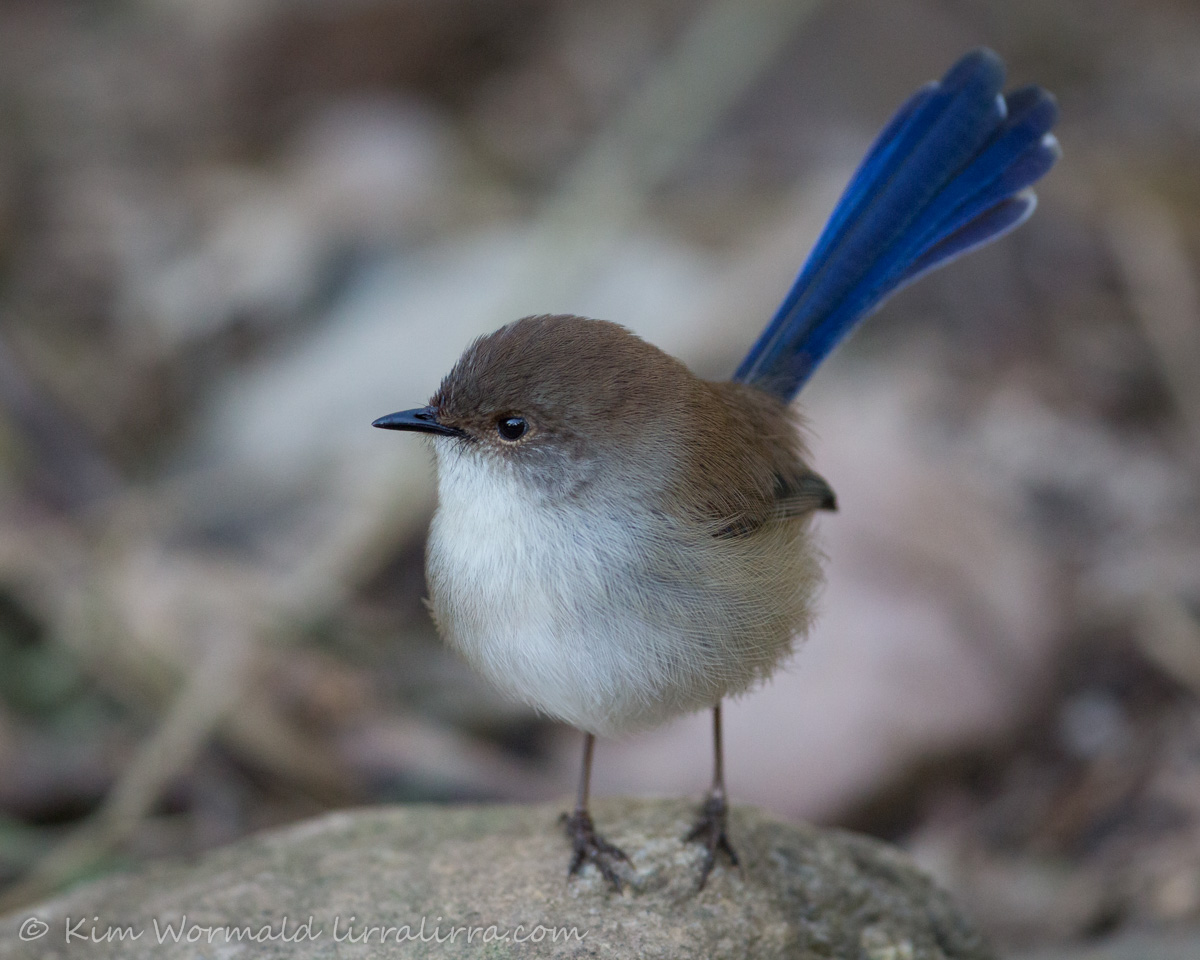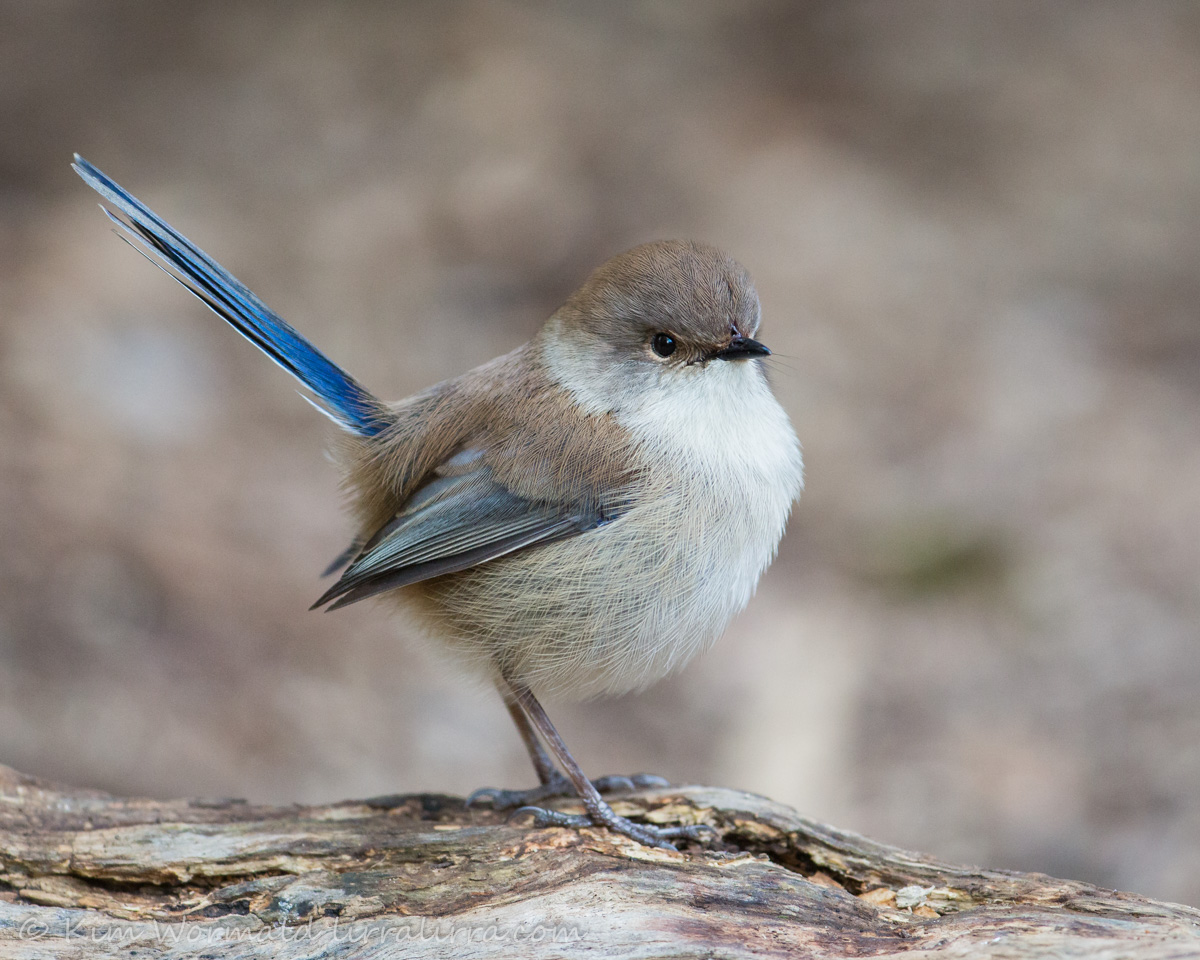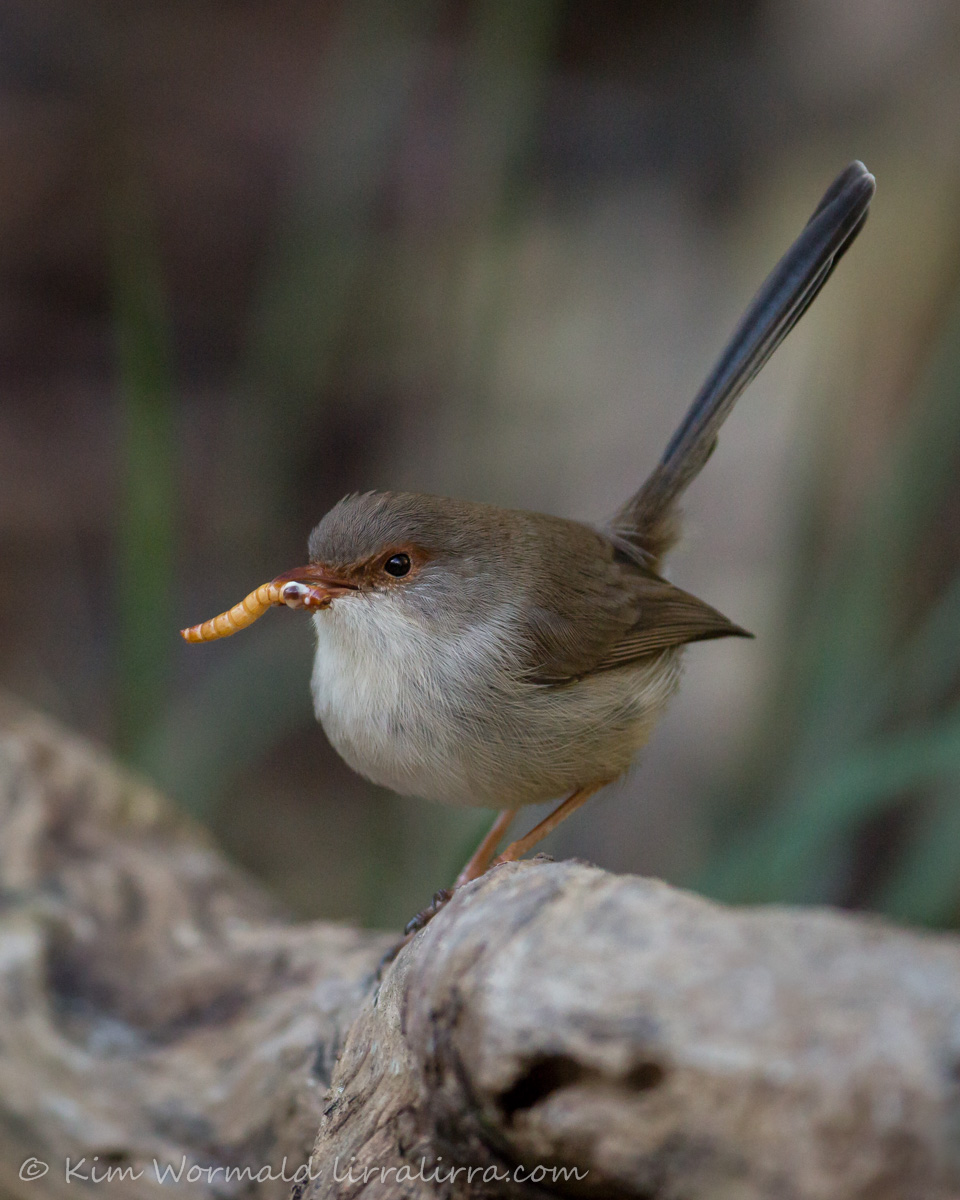The loser of the fight went into hiding so I only managed to capture images of the bold fairy-wren that caused the problem.
 Superb Fairy-wren (Malurus cyaneus) – male
Superb Fairy-wren (Malurus cyaneus) – male
Canon 5DIII, 1/640, f5.6, ISO 3200
.
The wild fairy-wren above sang loudly to claim his new territory – in an aviary at Healesville. I was in the aviary when visitors believed that fairy-wrens in the double-door lock were trying to escape and ushered them inside, which caused an immediate issue for the resident male.
I usually avoid aviaries, they give me the shivers, but the weather has been so dismal that I wandered along to the sanctuary just to see some wildlife and have cover nearby if it rained. The aviary I was in was a large flight aviary which had plenty of areas where the birds could hide and forage without being seen. When I saw the fairy-wrens in battle I was too busy watching to make sure the birds were okay and missed getting a shot of the males together.
.
 Superb Fairy-wren (Malurus cyaneus) – male
Superb Fairy-wren (Malurus cyaneus) – male
Canon 5DIII, 1/640, f5.6, ISO 3200
The resident male was in full breeding plumage with black and bright blue feathers on his head and throat. I would have thought the interloper would have lost a territorial battle but it was a decisive attack that caused the resident male to hide in thick foliage.
 Superb Fairy-wren (Malurus cyaneus) – male
Superb Fairy-wren (Malurus cyaneus) – male
Canon 5DIII, 1/640, f5.6, ISO 3200
The image above is my favourite of the series. He’s such a majestic fiesty little bird. I prefer the more intimate head angle in this shot, and like the way his feathers are clear and his tail and wings look so beautiful.
 Superb Fairy-wren (Malurus cyaneus) – female
Superb Fairy-wren (Malurus cyaneus) – female
Canon 5DIII, 1/640, f5.6, ISO 1600
Volunteers arrived to feed mealworms to the insectivores, which were enjoyed by the female fairy-wren above. The females often have a blue wash to their tails which cause them to be confused with juvenile or non-breeding males but females have brown bills and lores (the area between the bill and the eye) so their gender is easily identified. The ‘cyan’ part of their scientific name comes from the intense colours of the males’ breeding plumage. More information and images about Superb Fairy-wrens can be found on earlier lirralirra posts, including: Mr and Mrs Fairy-wren, Superb Fairy-wrens, Superb Plumage and Hurrah for the Fairy-wrens!
I wanted to inform a ranger about the plight of the resident male and was able to do this via the volunteers. The ranger said that several birds had been in the double-door locks that day. She eventually found the resident male and decided to trap him, make sure that he wasn’t injured and release him into the wild with his partner. There’s a kind of unity in that outcome.
Hopefully we’ll have brighter weather soon and I’ll be able to get back to some of my favourite haunts.
Happy birding, Kim
~ Thank you for visiting and commenting
~ If you would like a weekly email letting you know that lirralirra has been updated please use the ‘subscribe’ box above right

Superb images of a superb bird. What an amazing little character and so cool that the rangers indeed helped solve the issue at hand! Can’t say enough about how amazing your images are of what I bet is a busy bird.
They are busy little birds Sherry, super quick and super lovely.
Hi Kim,
Wonderful little bird with a long tail.
Very nice takes.
I’m glad you like the fairy-wrens Alain, thank you.
I do hope that he and his partner can be released. A wonderful outcome.
I do love the aggressive little birds which punch well above their weight – thank you and I hpe your weather improves. Soon.
Me too EC, on all points.
Wonderful detail and expressiveness on these beautiful little creatures. Glad you found an outlet for your passion even though the weather has been challenging !
Thank you Lyn, you are so right!